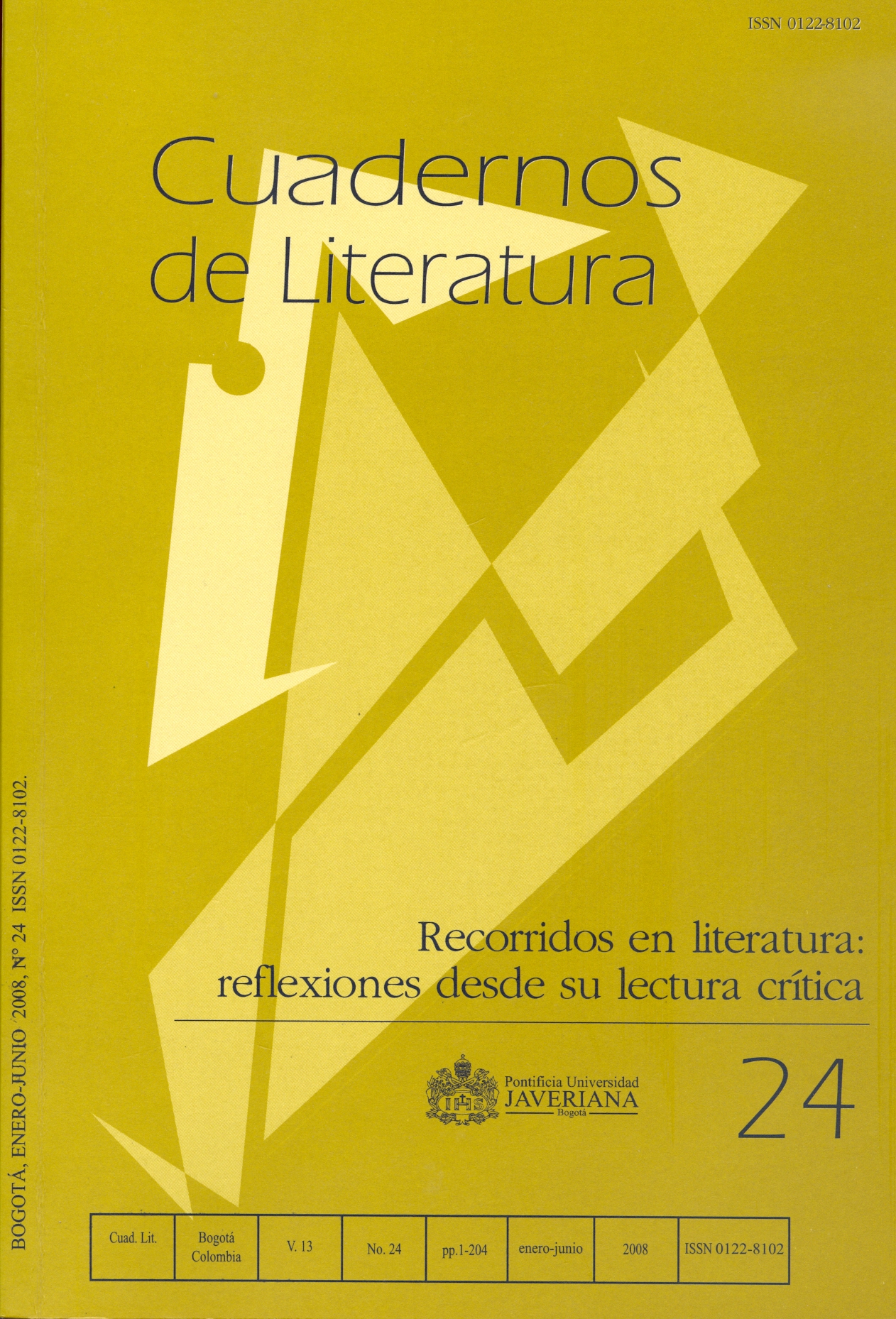Abstract
Este trabajo analiza la narrativa urbana de Eligio García (1947-2001), una exoresión literaria que comienza en los 1960. Gabriel García Márquez todavía conocía un país rural. Para Eligio, veinte años menos que su hermano, la vida es urbana. Esta narrativa está situada en una Cartagena familiar que no tiene que ver con virreyes e inquisidores, santos y esclavos, piratas y corsarios. Un boxeador, un beisbolista, y una mujer adicta al juego son la materia prima de los cuentos. Adolescentes en el umbral de la independencia son los protagonistas de su novela. Sus personajes desconfían de la historia oficial, desenmascarado sus figuras y hechos míticos. Esta renovación literaria viene de escritores provincianos, de estratos sociales medianos. El boom abrió la puerta a una América Latina literaria con su propia estética y valores, mostrando que lar egión en sus ideales e idiosincracias, tiene gente que vive y muere, ama y odia, crea y destruye, con historias que valen ser contadas.Cuadernos de Literatura is registered under a Creative Commons Attribution 4.0 International Public License. Thus, this work may be reproduced, distributed, and publicly shared in digital format, as long as the names of the authors and Pontificia Universidad Javeriana are acknowledged. Others are allowed to quote, adapt, transform, auto-archive, republish, and create based on this material, for any purpose (even commercial ones), provided the authorship is duly acknowledged, a link to the original work is provided, and it is specified if changes have been made. Pontificia Universidad Javeriana does not hold the rights of published works and the authors are solely responsible for the contents of their works; they keep the moral, intellectual, privacy, and publicity rights.
Approving the intervention of the work (review, copy-editing, translation, layout) and the following outreach, are granted through an use license and not through an assignment of rights. This means the journal and Pontificia Universidad Javeriana cannot be held responsible for any ethical malpractice by the authors. As a consequence of the protection granted by the use license, the journal is not required to publish recantations or modify information already published, unless the errata stems from the editorial management process. Publishing contents in this journal does not generate royalties for contributors.


